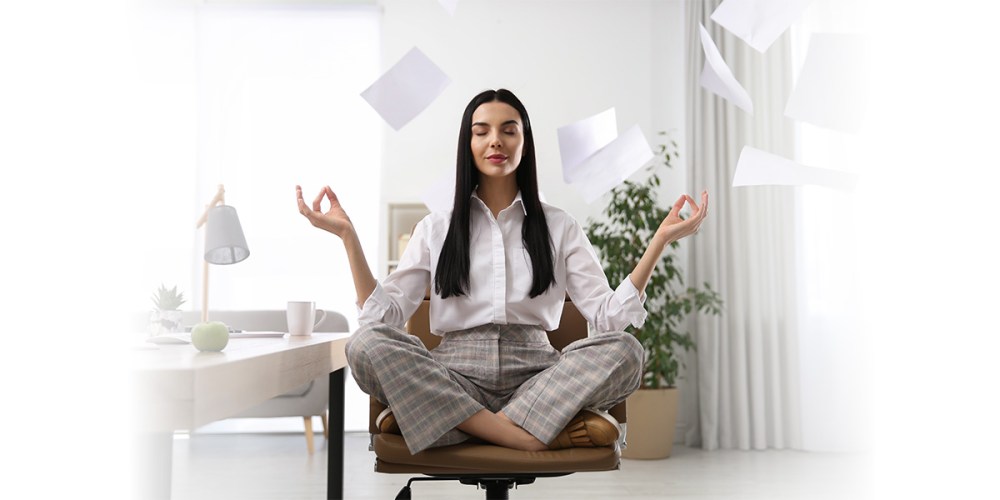Self-care. Technology. Not necessarily two terms you’d see beside each other on our blog. But today is National Self-Care Day—and believe it or not, technology and self-care are intrinsically linked, whether we (society) like it or not.
In this post, I take a look at:
- How technology is connected to self-care.
- How to identify if your relationship with technology becomes unhealthy.
- Steps you can take to balance your digital and physical worlds.
Modern technology is depressing us
If self-care were a candle, technology would be a breeze trying to blow it out.
Anxiety, overwhelm, literal aches and pains: These are all things that get worse the longer you look at a screen.
Too much screen time has been linked to:
- Headaches
- Blurry vision
- Brain fog
- Eye strain
- Sleep issues
- Obesity
- Chronic neck and back problems
- Depression
- Anxiety

Recommended screen times max out at around two hours. Our average screen time in the US is about seven hours. Right away, there’s an issue.
And “screen time” isn’t just the time spent on your phone. How much time are you spending staring at the TV, your iPad or your computer?
I can confidently say that I am well over the national average. And I’m betting that you are, too. We conduct most of our work from a computer screen; we consume media via TV, tablets and phones.
Getting to this point was a slow burn, and then, all at once, flames blazed. Enter the COVID connection…
COVID made it harder to unplug
Surprising no one, COVID significantly impacted our relationship with technology.
Suddenly, we were left at home to our own devices, sometimes unable to be anywhere else. Our TVs became a respite (Tiger King became everything), and our phones turned into little heart-palpitators anytime we received an incoming call from a loved one.
On the work side, there was no unplugging. We woke up, logged in, signed out and went to bed. There was no time and space for our personal lives.
But now, in “normal” times, have we let this behavior seep into our regular routines? Maybe. It’s up to us to recognize unhealthy behavior and then work to correct it.
Am I using technology in a healthy, balanced way?
Questions to ask yourself:
- Are you expected to be constantly “online” for work? (i.e., if the boss calls, are you picking up no matter what? Even while out shopping on Black Friday?)
- When you have a free moment, do you go straight to your phone first?
- When you’re in a waiting room, waiting in line, etc., are you scrolling your phone aimlessly?
- Do you think about social media when you’re not using it?
- Are you exhibiting neck, shoulder or back pain? (And did you fix your posture as you read this one?)
- Do you look at your phone (or any screen) right before bed?
If you answered “yes” to most of these questions, it’s time to reassess your technology relationship.
Unpluggable moments: Tips to balance your relationship with technology
Like many of us, I’m sure you have to be semi-glued to your computer to get your job done.
What about outside of work hours? Or what about those moments at work when a screen share isn’t necessary?
Here are some tips to get away from the screens:
- Walk and talk: One-on-ones, sporadic idea shares—things that don’t require your screen to share some news can all be taken away from your desk. Invest in a good pair of headphones, connect to your device and take that conversation on the go.
- Don’t be the annoying waiting room person: Anytime you’re waiting—whether it’s in line at the grocery store for three minutes or a dentist’s office for 30—try not to look at your phone. Pick up a magazine, take a book to read or look around the room. Don’t be the doom-scrolling detriment to society you once despised (she said to herself).
- Set app timers: All smartphones have this nifty little feature that helps limit your time on your apps. Try setting an app timer for anything you feel like you’re spending too much time on. Here’s how to set app timers on Apple and Android devices.
- Don’t take your phone to bed: “But my alarm clock!” Listen: The options between rooster and smartphone are aplenty. You shouldn’t look at your phone right before bed (a good way to keep yourself from falling asleep), and it definitely shouldn’t be the first thing you look at when you wake up (hello, immediate anxiety). Hatch has a great sunrise alarm, or any of these billion from Amazon would also work.
Every day is a self-care day
Here’s an obvious link between self-care and technology that you may or may not have realized:
The more time you spend on technology, the less time you have to take care of yourself.
On this Self-Care Day and every other day, unplug. Go outside and smell the roses (or feel the chilling breeze if you live in New England).
And for more self-care and culture-improving tips, subscribe to our blog today.




